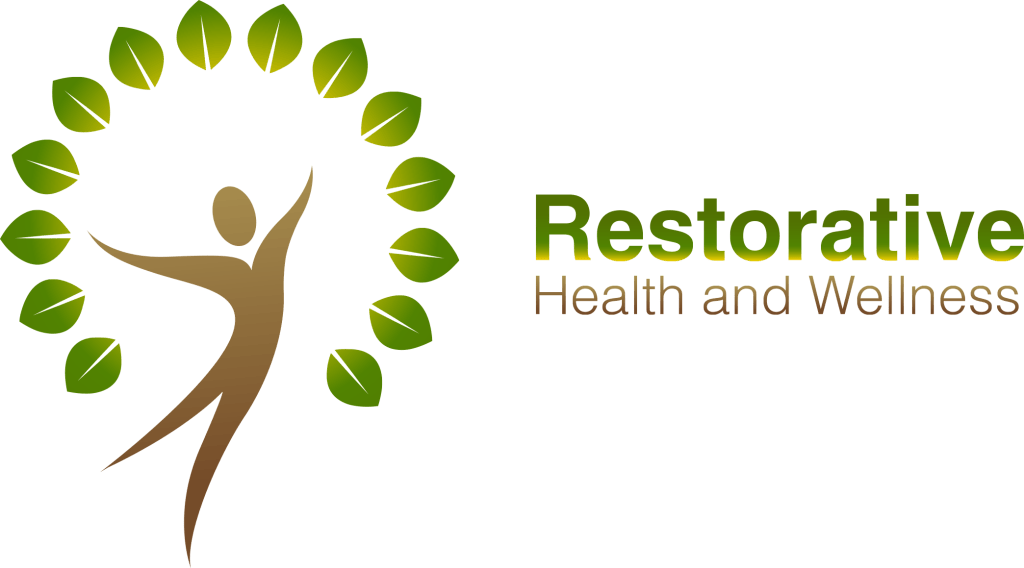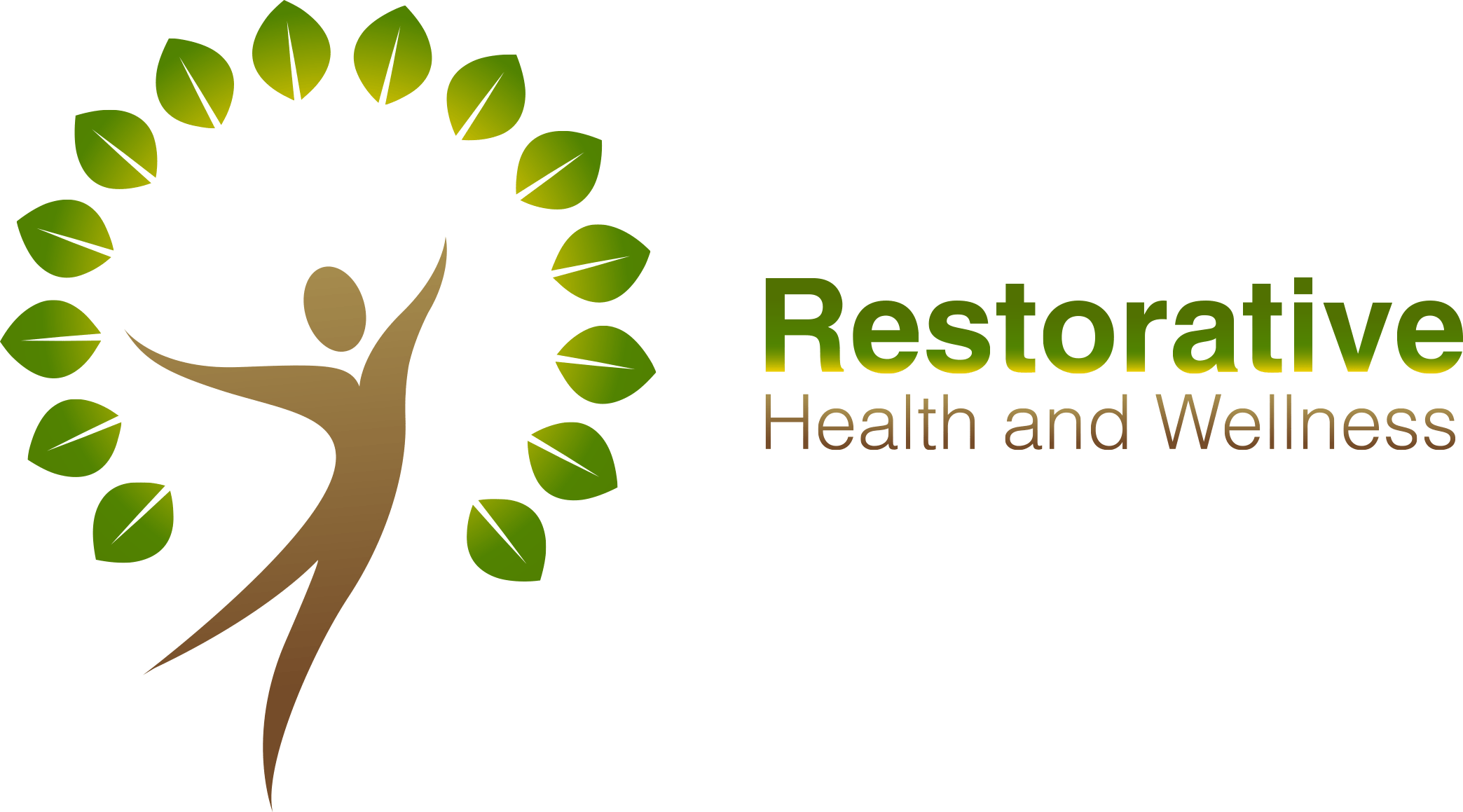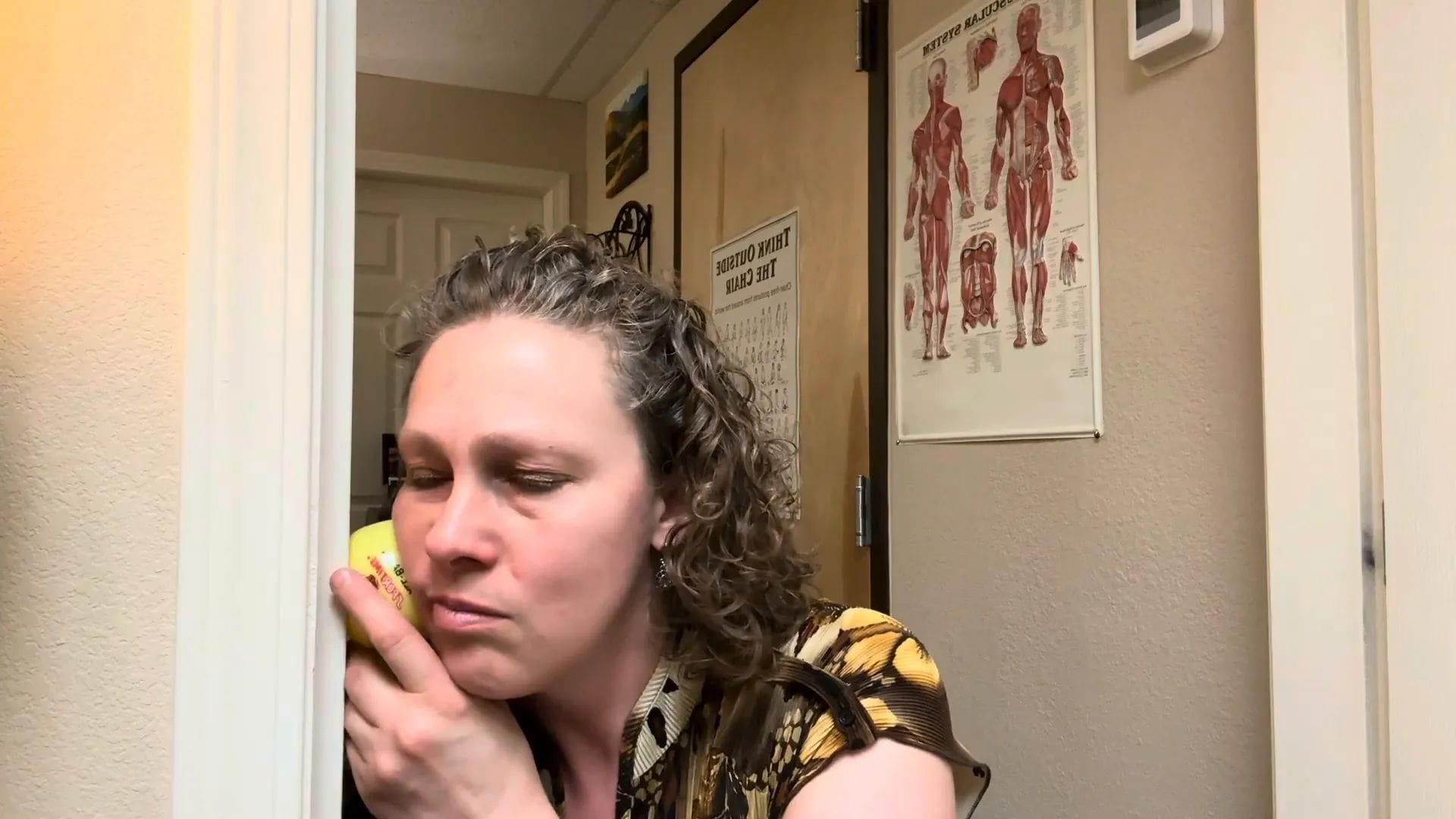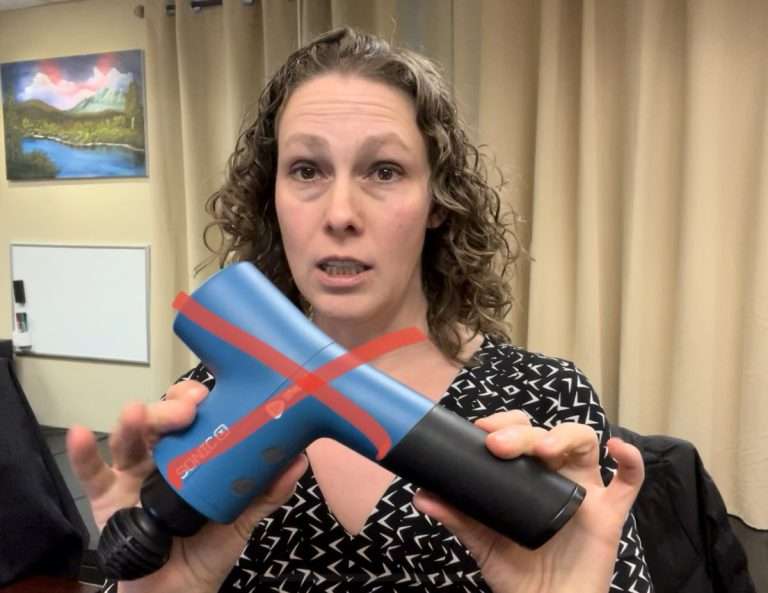Masseter Self Massage: A Simple Guide to Relieving Jaw Tension and TMJ Discomfort
If you’ve ever experienced jaw tightness, pain, or discomfort around your temples or cheeks, you’re not alone. The masseter muscle, a powerhouse of the jaw, often gets overworked and tense, leading to issues like TMJ dysfunction and headaches. I’m Emily Boudwin, a neuromuscular massage therapist and restorative exercise specialist, and today I’m sharing a straightforward, effective technique for masseter self massage using a soft ball. This method can help you relax this essential muscle and reduce tension, whether you’re dealing with TMJ issues or just everyday jaw tightness.

Understanding the Masseter Muscle and Its Importance
The masseter muscle is one of the strongest muscles in the body relative to its size and function. It plays a crucial role in chewing and jaw movement. Because we use our jaw muscles constantly—whether eating, speaking, or even clenching due to stress—they often become tight and overworked. This overuse can contribute to discomfort, pain, and conditions like temporomandibular joint (TMJ) dysfunction.
Masseter self massage is a practical way to release tension and improve blood flow to this muscle. By applying targeted pressure, you can encourage the muscle fibers to relax, reduce inflammation, and alleviate pain. This technique is especially beneficial for those who suffer from TMJ issues but is also a great preventative practice for anyone who experiences jaw stiffness or discomfort.
What You’ll Need: Choosing the Right Ball
For this self massage, you’ll want a soft, squishy ball. Tennis balls or lacrosse balls are commonly used, but they tend to be firmer and less forgiving. A softer ball allows you to relax fully into the pressure without causing excessive discomfort.
Using a ball with the right softness helps the muscle release more effectively. If the ball is too hard, it might cause you to tense up more, which defeats the purpose of the massage. Experiment with what feels best for you, but I recommend starting with a squishy ball for gentle, effective pressure.
How to Position Yourself for Effective Masseter Self Massage
One of the key tips for this technique is to use a doorway as your support surface. While you could do this against a plain wall, a doorway allows your shoulder to go past the edge, creating more space for your arm and jaw to move comfortably. This positioning helps you avoid awkward angles or twisting your neck, which can cause additional tension.
Here’s the step-by-step positioning:
- Stand facing the edge of a doorway.
- Place the ball directly on the masseter muscle, which is located on the outside of your jaw, just in front of your ear and below your cheekbone.
- Lean gently into the ball, allowing your shoulder to pass the doorway edge for better leverage and comfort.
- Relax your neck and jaw as you apply pressure.
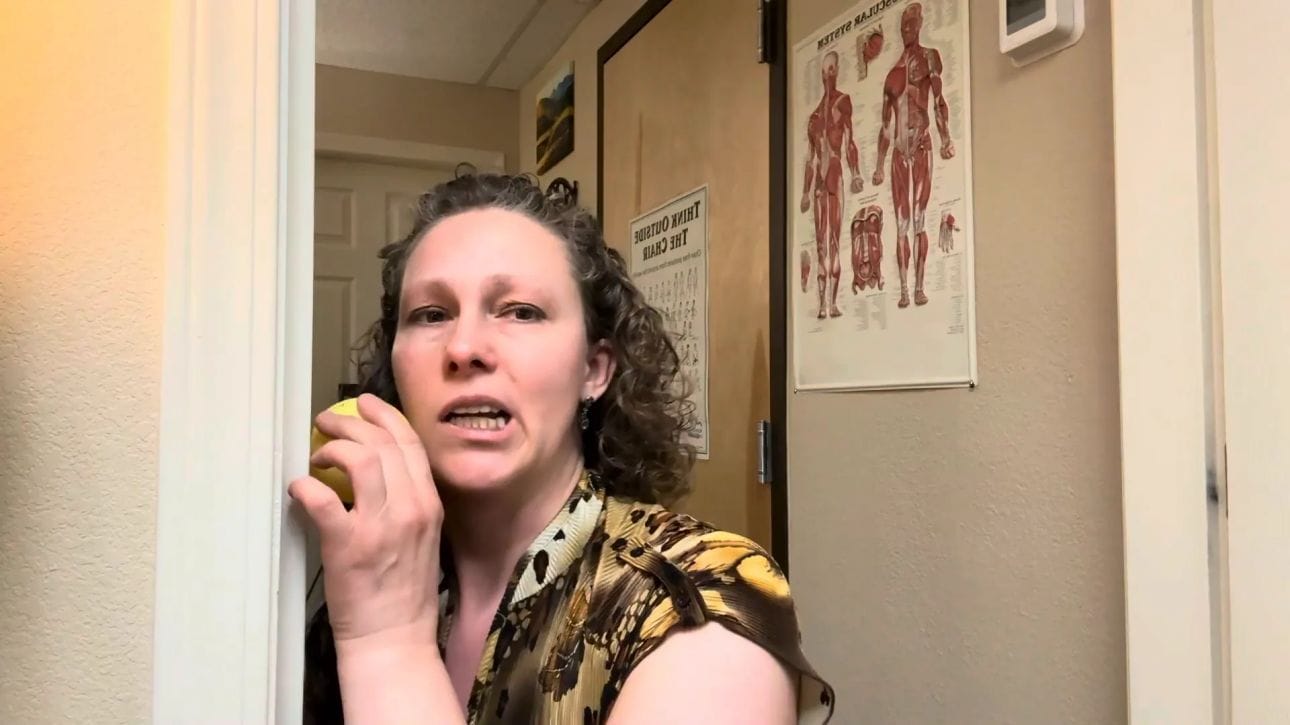
Locating and Targeting the Masseter Muscle
When working on the masseter muscle, it’s important to start at the center of the muscle belly. This is usually the tightest and most prominent part of the muscle. From there, you can work your way up and down to cover the entire muscle.
One of the most sensitive and often sore spots lies just beneath the cheekbone. This area can be a bit tricky to reach directly, but by angling the ball slightly and pressing it in through the muscle, you can access this deep, tender spot effectively.
Here’s how to target different areas:
- Center of the masseter: Begin here to find the tightest point.
- Bottom of the muscle: Work your way down toward the jawline.
- Underneath the cheekbone: Angle the ball to press into this often sore area gently.

Using Movement to Enhance the Massage
While holding the ball in place, gently open and close your jaw. This movement helps the muscle fibers stretch and release deeper tension. It also helps you identify particularly tight or tender spots that might need extra attention.
Once you find a tight or sore spot, hold the pressure there and work it gently by rocking or small circular movements with the ball. Spend a little more time on these areas to encourage relaxation and reduce muscle knots.
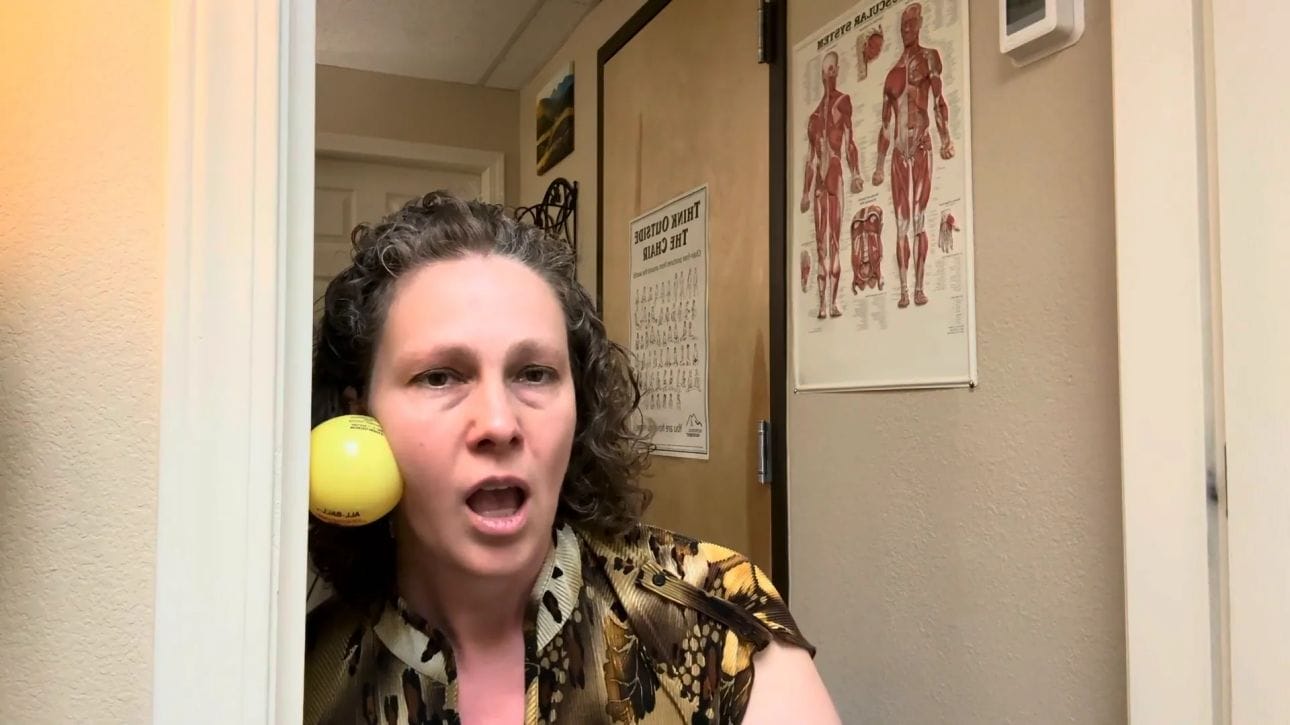
Benefits of Masseter Self Massage
This simple technique offers numerous benefits, especially for those struggling with TMJ dysfunction or chronic jaw tension:
- Reduces muscle tightness: Helps relax the masseter, which can become tight from clenching or grinding.
- Alleviates TMJ pain: Eases discomfort around the temporomandibular joint by releasing pressure on the muscles involved.
- Improves jaw mobility: Increases range of motion and reduces stiffness.
- Prevents headaches: Tense jaw muscles can contribute to tension headaches; releasing them can help reduce headache frequency.
- Promotes relaxation: The gentle pressure and movement help calm the nervous system and reduce stress-related tension.
Incorporating masseter self massage into your routine can be a game-changer, especially if you notice jaw pain after long days of work, stress, or frequent chewing.
Precautions and Tips for Safe Practice
While masseter self massage is generally safe, keep these tips in mind:
- Start gently: Don’t press too hard at first. The goal is to relax the muscle, not cause pain.
- Avoid inflamed areas: If you have an active infection or inflammation in the jaw, consult a healthcare professional before self-massaging.
- Limit duration: Spend about 1-2 minutes on each side initially, and adjust based on comfort and results.
- Stay consistent: Regular practice yields the best results.
Additional Resources for Jaw and Headache Relief
If you’re interested in exploring more self care techniques for jaw and head tension, consider checking out these helpful resources:
- TMJ Self Massage: The Masseter – A detailed guide with step-by-step instructions to reduce jaw pain and trigger points.
- Relax Your Jaw – Learn how to take away tension in your jaw with a comprehensive self massage tutorial.
- Headache Self Massage SCM – Techniques focusing on the sternocleidomastoid muscle, often involved in headache pain.
- Suboccipital Self Massage Guide – A helpful tutorial to ease tension at the base of your skull, which can contribute to headaches and neck pain.
Final Thoughts
Masseter self massage is a simple, effective, and accessible tool to help you manage jaw tension and TMJ discomfort. Using a soft ball and the support of a doorway, you can target the masseter muscle with precision and ease. Remember to approach this technique gently, listen to your body, and incorporate it regularly for the best results.
Jaw muscles are some of the hardest working muscles in the body, and giving them a little attention can go a long way toward improving your overall comfort and quality of life. If you’re experiencing persistent jaw pain or TMJ symptoms, consider combining this self massage with professional care for comprehensive relief.
For more tips on managing pain and improving muscle health, visit Restorative Health and Wellness, where you’ll find a wealth of resources on massage, exercises, and self-care techniques.
